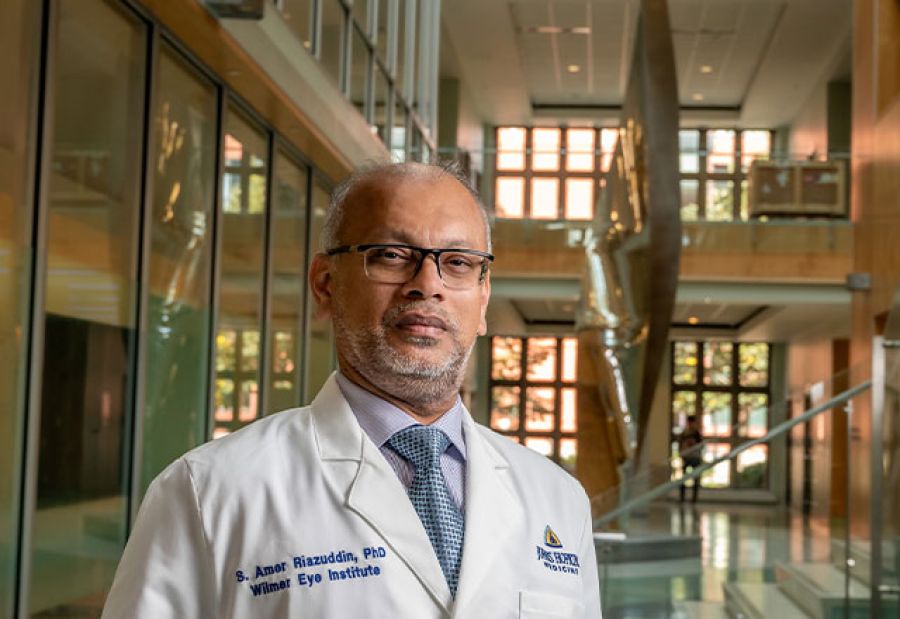Stem Cell Solutions for Corneal Transplants
News from our full member Wilmer Eye Institute Johns Hopkins Medicine
Most people know the cornea is the outermost tissue of the eye — the part that you touch when you put in contact lenses. What people may not know is that the cornea has five layers, the innermost of which is the endothelium. When the function of the corneal endothelium is compromised either due to disease or trauma, the cornea loses its transparency, which results in vision loss.
Transplant surgery using human donor tissue is the only treatment available for corneal endothelial dysfunction. Unfortunately, corneal transplants using donor corneas are expensive and, owing to the shortage of transplantablegrade corneal tissue, are out of reach for many people, particularly those in underresourced nations.
Wilmer’s Amer Riazuddin, Ph.D., a rising star in ocular regenerative medicine, is focused on developing stem cell solutions to improve outcomes for people around the world who need these transplants.
One reason for the shortage of transplantable-grade corneal tissue in many parts of the world is the lack of eye banking. As an example, Riazuddin cites China, the world’s most populous country, where there is neither a national eye bank association nor eye bank union, according to a report in the journal PLoS ONE in 2020. “Most, if not all, of the donor tissue for transplant surgeries in China comes from the eye banks of America,” he says.
Riazuddin’s team has found a way to increase the supply of the cells needed to treat corneal endothelial dysfunction. They take pluripotent stem cells, which have the potential to differentiate into most cell types of the human body, as the beginning material and differentiate them into corneal endothelial cells.
Read the whole article here!
